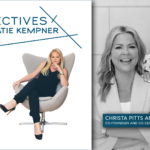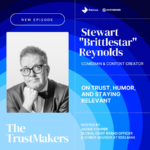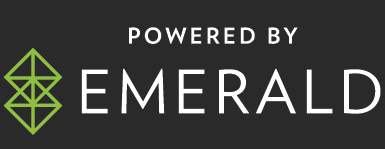In a world where AI is perfecting every brand’s grammar, who’s perfecting your brand’s personality?
By Jennifer Harrington, CEO, Hatch
AI is getting scarily good at creating content. Yes, it can write your blog posts, fill your content calendar and even try to develop a personality. With so much content already being planned, drafted, polished and published by AI, it’s no surprise that brand voices are quickly becoming painfully (and noticeably) generic.
The numbers tell the story: Nearly all marketers now use AI tools, with 88 percent using AI in their day-to-day roles, yet this widespread adoption is creating new challenges. Academic research has found, for example, that when people learn that content is AI-generated, rather than human-created, it significantly lowers their perception and engagement.
That’s because when every brand voice sounds the same, none stands out.
We’re witnessing something unprecedented: the democratization of content creation alongside the homogenization of brand voices. AI tools have made it possible for any company to produce professional-looking content at scale, but they’re also creating a “vanilla effect,” where everything is starting to taste the same.
The problem isn’t AI itself. It’s how we’re using it. Too many brands are treating AI as their creative director rather than their research assistant. They’re asking it to generate their personality instead of expressing one they already have.
What does an authentic brand voice do that AI can’t — well, not quite yet?
Human authenticity
AI can certainly copy a writing style if you feed it enough examples. But it can’t tell a story about life experience, provide personal perspective or weave in a quirky sense of humor. Think of AI like that kid in your fifth-grade class who brought a joke book to class. A couple of them might have made you laugh, but did you remember any of them a week later? Don’t be that brand.
Emotional intelligence in context
Much like that fifth-grader, AI struggles with reading the room. It doesn’t know when to be vulnerable, when to take a stand — or importantly, when humor might backfire. Human editors understand cultural moments, industry tensions and audience mood in ways that create genuine connection. Speaking as a brand takes empathy you can’t feed into a prompt box.
Consistency across channels
Organic posts, advertorials and web copy all need to sound like they’re coming from the same brand. Even though AI can help you generate large quantities of content, it may (and will) come up own point of view of the moment without your guidance. Better to take the time to create differentiated content with a strong voice that you can tap wherever and whenever.
Trust and recognition
This is especially true for B2B brands with a longer sales cycle that need to build trust and show expertise over time. That consistent memorable voice across channels? It also needs to be trustworthy and credible. Be sure to cover your content with the human touch.
The smart way to use AI for brand voice
I’m not saying that AI tools aren’t helpful. As our robot research assistants improve, their power to help brief your writers, train your own AI tools, and even evaluate content for consistency will become even more essential than they already are.
The key is positioning AI as your brand voice amplifier, not its creator:
- Research and ideation: Let AI surface trends, compile data, and suggest content angles.
- Draft enhancement: Use it to refine tone, improve clarity or adapt content for different platforms.
- Consistency checking: Train AI on your style guide to flag content that drifts off-brand.
- Scale personalization: Apply your established voice principles to customize content for different audience segments.
A few real-world/real brand voice examples
Duolingo: When personality becomes strategy
There are a lot of language-learning platforms to choose from, but Duolingo’s awareness and growth has skyrocketed thanks to a playful, quirky brand voice that extends far beyond their marketing.
Zaria Parvez, who transformed Duolingo into a social-first brand and made its chaotic mascot Duo the owl fly into everything from Charli XCX’s Brat tour to the Love Island USA villa, leaned into a voice that is “expressive, playful, embracing and worldly.” Try prompting ChatGPT to create something so distinctive. Today, its distinctive voice is consistent across every touchpoint, making the brand instantly recognizable.
SaaS brands: The generic trap
On the other hand, SaaS brands have to fight the temptation of using vague jargon like “empower innovation,” “accelerate transformation” and “drive scalable solutions.” This is the exact type of language that sounds like AI — and offers your brand the opportunity to use its voice as a competitive edge.
Brands like Mailchimp (“Send better email”), Slack (“Work shouldn’t suck”), and Monday.com (read: playfully direct) have each built empires by zigging when their industries zagged. Their voices feel human because humans crafted them with intention.
In a world where AI perfects every brand’s grammar, who’s perfecting their personality?your brand’s differentiated voice
Even in a chaotic marketing environment, the goal of your brand’s voice is to be more than just louder than your competitors. It’s about being intentional. Here’s a practical three-step approach to get you there:
- Audit your voice reality
Before you can improve, you must understand where you are. Collect 20 to 30 pieces of recent content across a variety of branded channels and ask:
- If you removed your logo, would people know this was your brand?
- What emotions does your content evoke — consistently?
- How does your voice compare to your top three competitors?
- Define your voice architecture
Create a voice framework built on three basic layers:
- Core values: What does your brand fundamentally believe?
- Personality traits: How do these values show up in communication? (Think: 3 key traits)
- Tactical guidelines: Create specific dos and don’ts for your writers and your AI tools.
- Build your voice portfolio
Consider and create examples of your voice in action across different scenarios:
- Product launches
- Customer support
- Social media engagement
- Long-form content
- Crisis communication
Tips for creating more differentiated content
With your framework filled, it’s time to get to work. Here’s how.
- Define your brand voice in detail and capture the rules in a comprehensive style guide. This should include not just your tone, but decision-making principles for various scenarios. (See your framework above.)
- Use AI to create outlines, research data points and finesse language. As tempting as it seems, do not use AI to create content from scratch or make strategic voice decisions.
- Review everything against the style guide before publishing. Train your team (and your AI tools) to recognize when your content drifts off-brand.
- Test and iterate based on audience response. Your brand voice should evolve based on what resonates, not what feels comfortable.
- Invest in voice training across your organization. Everyone who creates content in your brand’s voice should understand and embody it.
The future of human-AI collaboration
Brands that will win in an AI-saturated content landscape won’t be those that reject AI or embrace it completely. They’ll be the ones that use AI to amplify their human authenticity at scale.
Think of your brand voice as a competitive moat in a world where technical capabilities are increasingly commoditized. AI can write the words, but you need to provide the perspective and the personality. Your brand voice can be a superpower — but only if you invest the time in making it authentic and differentiating.
The choice isn’t between human or AI. It’s between generic or genuine. Choose genuine everytime.
About the Author
Jennifer Harrington is Founder & CEO of HATCH. She also serves on several boards focused on art education and food insecurity, including the Greater Boston Food Bank, Massachusetts College of Art and Design, and RAW Art Works. In 2018, Governor Baker appointed her to the Board of the Cultural Facilities Fund, where she continues to serve as a director. She is also part of the Corporate Executive Council for GBH and the Board of Advisors for Community Cooks, where she serves as a team captain. Jennifer previously served on the Foundation Board for Boston Arts Academy during its capital campaign to support the construction of a new school building, where she received the AllStar Award for Philanthropy. She was honored with the Greater Boston Chamber’s Pinnacle Leadership Award for Entrepreneurship in 2021 and was named one of Boston’s ‘40 under 40’ by the Boston Business Journal. Most recently, she was recognized as a ‘Woman We Admire’ by the AdClub.
Jennifer holds a degree in Art History from Boston University. She lives outside of Boston with her husband, a public-school art and design teacher, and their four children.











